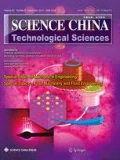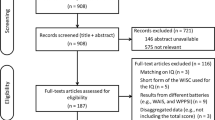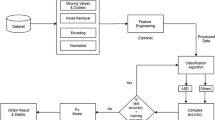Abstract
Gifted children are able to learn in a more advanced way than others, probably due to neurophysiological differences in the communication efficiency in neural pathways. Topological features contribute to understanding the correlation between the brain structure and intelligence. Despite decades of neuroscience research using MRI, methods based on brain region connectivity patterns are limited by MRI artifacts, which therefore leads to revisiting MRI morphometric features, with the aim of using them to directly identify gifted children instead of using brain connectivity. However, the small, high-dimensional morphometric feature dataset with outliers makes the task of finding good classification models challenging. To this end, a hybrid method is proposed that combines tensor completion and feature selection methods to handle outliers and then select the discriminative features. The proposed method can achieve a classification accuracy of 93.1%, higher than other existing algorithms, which is thus suitable for the small MRI datasets with outliers in supervised classification scenarios.
Similar content being viewed by others
References
Navas-Sánchez F J, Carmona S, Alemán-Gómez Y, et al. Cortical morphometry in frontoparietal and default mode networks in math-gifted adolescents. Hum Brain Mapp, 2016, 37: 1893–1902
Gross M U M. Exceptionally gifted children: Long-term outcomes of academic acceleration and nonacceleration. J Education Gifted, 2006, 29: 404–429
Navas-Sánchez F J, Alemán-Gómez Y, Sánchez-Gonzalez J, et al. White matter microstructure correlates of mathematical giftedness and intelligence quotient. Hum Brain Mapp, 2014, 35: 2619–2631
Hales P W, d’Arco F, Cooper J, et al. Arterial spin labelling and diffusion-weighted imaging in paediatric brain tumours. Neurolmage-Clin, 2019, 22: 101696
Raja R, Rosenberg G, Caprihan A. Review of diffusion MRI studies in chronic white matter diseases. Neurosci Lett, 2019, 694: 198–207
Assaf Y, Johansen-Berg H, Thiebaut de Schotten M. The role of diffusion MRI in neuroscience. NMR Biomed, 2019, 32: e3762
Yun J Y, Boedhoe P S W, Vriend C, et al. Brain structural covariance networks in obsessive-compulsive disorder: A graph analysis from the ENIGMA Consortium. Brain, 2020, 143: 684–700
Qi T, Schaadt G, Cafiero R, et al. The emergence of long-range language network structural covariance and language abilities. NeuroImage, 2019, 191: 36–48
DuPre E, Spreng R N. Structural covariance networks across the life span, from 6 to 94 years of age. Network Neurosci, 2017, 1: 302–323
Walker L, Gozzi M, Lenroot R, et al. Diffusion tensor imaging in young children with autism: Biological effects and potential confounds. Biol Psychiatry, 2012, 72: 1043–1051
Maier-Hein K H, Neher P, Houde J-C, et al. Tractography-based connectomes are dominated by false-positive connections. bioRxiv, 2016, doi: https://doi.org/10.1101/084137
Solé-Casals J, Serra-Grabulosa J M, Romero-Garcia R, et al. Structural brain network of gifted children has a more integrated and versatile topology. Brain Struct Funct, 2019, 224: 2373–2383
Bethlehem R A I, Romero-Garcia R, Mak E, et al. Structural covariance networks in children with autism or ADHD. Cerebral Cortex, 2017, 27: 4267–4276
Seidlitz J, Váša F, Shinn M, et al. Morphometric similarity networks detect microscale cortical organization and predict inter-individual cognitive variation. Neuron, 2018, 97: 231–247.e7
Yang J H, Zhao X L, Ji T Y, et al. Low-rank tensor train for tensor robust principal component analysis. Appl Math Computation, 2020, 367: 124783
Zhao X L, Xu W H, Jiang T X, et al. Deep plug-and-play prior for low-rank tensor completion. Neurocomputing, 2020, 400: 137–149
Huang H, Liu Y, Liu J, et al. Provable tensor ring completion. Signal Processing, 2020, 171: 107486
Lacroix T, Obozinski G, Usunier N. Tensor decompositions for temporal knowledge base completion. 2020, arXiv: 2004.04926
Lu C, Peng X, Wei Y. Low-rank tensor completion with a new tensor nuclear norm induced by invertible linear transforms. In: Proceedings of the IEEE Computer Society Conference on Computer Vision and Pattern Recognition. Long Beach, 2019
Chen Y L, C THsu, Liao H Y M. Simultaneous tensor decomposition and completion using factor priors. IEEE Trans Pattern Anal Mach Intell, 2014, 36: 577–591
Balažević I, Allen C, Hospedales T M. Tucker: Tensor factorization for knowledge graph completion. In: EMNLP-IJCNLP 2019–2019 Conference on Empirical Methods in Natural Language Processing and 9th International Joint Conference on Natural Language Processing, Proceedings of the Conference. Hong Kong, 2020
Najafi M, He L, Yu P S. Outlier-robust multi-aspect streaming tensor completion and factorization. In: IJCAI International Joint Conference on Artificial Intelligence. Macao, 2019
Ko C Y, Batselier K, Daniel L, et al. Fast and accurate tensor completion with total variation regularized tensor trains. IEEE Trans Image Process, 2020, 29: 6918–6931
Solé-Casals J, Caiafa C F, Zhao Q, et al. Brain-computer interface with corrupted EEG data: A tensor completion approach. Cogn Comput, 2018, 10: 1062–1074
Feng D, Hao J, Zhenglu Y, et al. On the Robustness of EEG Tensor Completion Methods. Sci China Tech Sci, 2021, doi: https://doi.org/10.1007/s11431-020-1839-5
Gárate-Escamila A K, Hajjam El Hassani A, Andrès E. Classification models for heart disease prediction using feature selection and PCA. Inf Med Unlocked, 2020, 19: 100330
Chen Y W, Lin C J. Combining SVMs with various feature selection strategies. In: Guyon I, Nikravesh M, Gunn S, et al. (eds). Feature Extraction. Studies in Fuzziness and Soft Computing. Vol 207. Berlin, Heidelberg: Springer, 2006
Tsagris M, Lagani V, Tsamardinos I. Feature selection for high-dimensional temporal data. BMC BioInf, 2018, 19: 17
Ang J C, Mirzal A, Haron H, et al. Supervised, unsupervised, and semi-supervised feature selection: A review on gene selection. IEEE ACM Trans Comput Biol Bioinf, 2016, 13: 971–989
Rouhi A, Nezamabadi-Pour H. Feature selection in high-dimensional data. In: Amini M, ed. Advances in Intelligent Systems and Computing. Vol. 1123. Cham: Springer, 2020. 85–128
Limiñana Gras R M, Bordoy M, Ballesta G J, et al. Creativity, intelectual abilities and response styles: Implications for academic performance in the secondary school. Anales de Psicología/Annals of Psychology, 2010, 26: 212–219
Romero-Garcia R, Atienza M, Clemmensen L H, et al. Effects of network resolution on topological properties of human neocortex. NeuroImage, 2012, 59: 3522–3532
Desikan R S, Ségonne F, Fischl B, et al. An automated labeling system for subdividing the human cerebral cortex on MRI scans into gyral based regions of interest. NeuroImage, 2006, 31: 968–980
Li Z, Sergin N D, Yan H, et al. Tensor completion for weakly-dependent data on graph for metro passenger flow prediction. 2019, arXiv: 1912.05693v1
van den Heuvel M P, Scholtens L H, Feldman Barrett L, et al. Bridging cytoarchitectonics and connectomics in human cerebral cortex. J Neurosci, 2015, 35: 13943–13948
Author information
Authors and Affiliations
Corresponding authors
Additional information
This work was supported by the National Key R&D Program of China (Grant No. 2017YFE0129700), the National Natural Science Foundation of China (Key Program) (Grant No. 11932013), the National Natural Science Foundation of China (Grant No. 61673224), the Tianjin Natural Science Foundation for Distinguished Young Scholars (Grant No. 18JCJQJC46100), and the Tianjin Science and Technology Plan Project (Grant No. 18ZXJMTG00260). J.S-C. work is also based upon work from COST Action CA18106, supported by COST (European Cooperation in Science and Technology). C.F.C work was supported by grants PICT 2017-3208 and UBACYT 20020170100192BA (Argentina).
Rights and permissions
About this article
Cite this article
Zhang, J., Feng, F., Han, T. et al. A hybrid method to select morphometric features using tensor completion and F-score rank for gifted children identification. Sci. China Technol. Sci. 64, 1863–1871 (2021). https://doi.org/10.1007/s11431-020-1876-3
Received:
Accepted:
Published:
Issue Date:
DOI: https://doi.org/10.1007/s11431-020-1876-3




